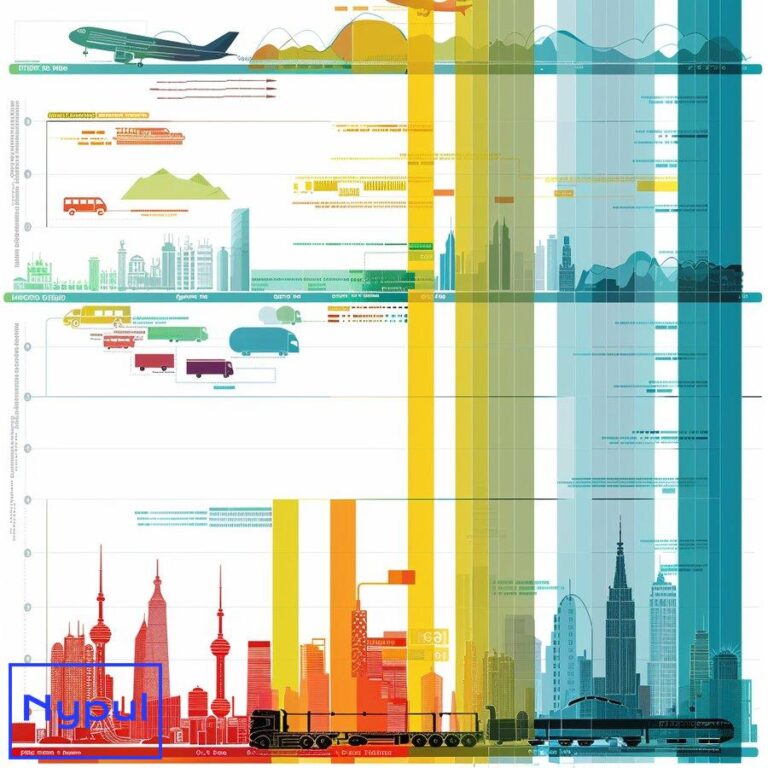What Are the Three Basic Types of GPS Augmentation
What is GPS augmentation and why is it important?
Global Positioning System (GPS) augmentation refers to methods, techniques, and systems used to improve the accuracy, integrity, availability, and continuity of GPS signals. These enhancements are crucial for applications that require precise positioning and navigation, such as aviation, maritime operations, and precision agriculture.

GPS augmentation addresses several limitations inherent in the standard GPS system:
Accuracy Improvement: Standard GPS can have errors ranging from a few meters to tens of meters. Augmentation systems can reduce this error to centimeters or even millimeters in some cases.
Integrity Monitoring: Augmentation systems provide real-time information about the reliability of GPS signals, alerting users to potential errors or system malfunctions.
Availability Enhancement: By incorporating additional satellites or ground-based reference stations, augmentation systems increase the number of available signals, improving coverage in challenging environments.
Continuity Assurance: Augmentation systems help maintain consistent performance even when individual GPS satellites are unavailable or experiencing issues.
The importance of GPS augmentation becomes evident when considering its applications across various industries:
Aviation: Precise navigation is critical for safe takeoffs, landings, and en-route operations, especially in low-visibility conditions.
Maritime: Accurate positioning is essential for safe navigation in congested waterways, ports, and during offshore operations.
Agriculture: Precision farming techniques rely on centimeter-level accuracy for tasks like automated tractor guidance and targeted application of fertilizers or pesticides.
Surveying and Mapping: High-precision GPS augmentation enables accurate land surveys, construction site planning, and geographical information system (GIS) data collection.
Transportation and Logistics: Enhanced GPS accuracy improves fleet management, route optimization, and asset tracking.
Emergency Services: Augmented GPS helps first responders locate incidents more quickly and accurately, potentially saving lives.
To illustrate the impact of GPS augmentation on positioning accuracy, consider the following table:
| Application | Standard GPS Accuracy | Augmented GPS Accuracy |
|---|---|---|
| Aviation | 10-20 meters | 0.3-1 meter |
| Maritime | 5-15 meters | 0.1-1 meter |
| Agriculture | 2-5 meters | 1-5 centimeters |
| Surveying | 1-5 meters | 1-10 millimeters |
The significant improvement in accuracy demonstrates why GPS augmentation is crucial for these applications. Without augmentation, many of these industries would struggle to meet their operational requirements and safety standards.
GPS augmentation systems have evolved over time to address specific needs and overcome technological challenges. The three basic types of GPS augmentation systems – Satellite-Based Augmentation Systems (SBAS), Ground-Based Augmentation Systems (GBAS), and Aircraft-Based Augmentation Systems (ABAS) – each play a unique role in enhancing GPS performance for different applications and environments.
Understanding these augmentation systems is essential for professionals in industries relying on precise positioning and navigation. As we delve deeper into each type of augmentation system, we’ll explore their specific functionalities, advantages, and applications, providing a comprehensive overview of how they contribute to the reliability and accuracy of GPS-based operations.
What are the three basic types of GPS augmentation systems?
The three basic types of GPS augmentation systems are designed to enhance the performance of standard GPS in different ways and for various applications. Each system has its unique characteristics, advantages, and limitations. The three types are:
1. Satellite-Based Augmentation Systems (SBAS)
SBAS uses a network of ground-based reference stations and geostationary satellites to provide wide-area coverage and improved GPS accuracy.
Key Features:
– Wide area coverage (continental or regional)
– Geostationary satellite signal transmission
– Correction data for multiple error sources
Examples:
– Wide Area Augmentation System (WAAS) in North America
– European Geostationary Navigation Overlay Service (EGNOS) in Europe
– Multi-functional Satellite Augmentation System (MSAS) in Japan
– GPS Aided Geo Augmented Navigation (GAGAN) in India
2. Ground-Based Augmentation Systems (GBAS)
GBAS relies on ground-based reference stations to provide highly accurate, local area augmentation, primarily for precision approach and landing operations in aviation.
Key Features:
– Local area coverage (typically within 20-30 nautical miles)
– VHF data broadcast
– Centimeter-level accuracy
– Supports multiple precision approach paths
Examples:
– Local Area Augmentation System (LAAS) in the United States
– Ground-Based Regional Augmentation System (GRAS) in Australia
3. Aircraft-Based Augmentation Systems (ABAS)
ABAS uses onboard equipment to enhance GPS performance and ensure integrity without relying on external reference stations.
Key Features:
– Autonomous operation
– Onboard integrity monitoring
– Integration with other aircraft sensors
Examples:
– Receiver Autonomous Integrity Monitoring (RAIM)
– Aircraft Autonomous Integrity Monitoring (AAIM)
To better understand the key differences between these augmentation systems, consider the following comparison table:
| Characteristic | SBAS | GBAS | ABAS |
|---|---|---|---|
| Coverage Area | Wide (continental/regional) | Local (airport vicinity) | Autonomous (aircraft-specific) |
| Primary Application | En-route, terminal, non-precision approach | Precision approach and landing | Integrity monitoring for all flight phases |
| Accuracy | 1-3 meters | 1 meter or better | Varies (depends on GPS accuracy) |
| Infrastructure | Ground stations and geostationary satellites | Local ground stations | Onboard aircraft equipment |
| Signal Transmission | L-band satellite signal | VHF data broadcast | N/A (internal processing) |
| Integrity Information | Yes | Yes | Yes |
| Continuity | High | Very High | High |
| Availability | High | Very High (limited coverage area) | High |
Each of these augmentation systems plays a crucial role in enhancing GPS performance for specific applications and environments. SBAS provides wide-area coverage and improved accuracy for various applications, including aviation, maritime, and land-based operations. GBAS offers highly precise local area augmentation, primarily benefiting aviation for precision approach and landing operations. ABAS ensures integrity and enhances GPS performance using onboard equipment, making it valuable for aircraft operations in areas without ground-based augmentation coverage.
The choice of augmentation system depends on factors such as the required accuracy, coverage area, application specifics, and available infrastructure. In many cases, multiple augmentation systems may be used in combination to provide comprehensive coverage and meet the stringent requirements of safety-critical applications.
As we explore each of these augmentation systems in more detail in the following sections, we’ll gain a deeper understanding of their specific functionalities, advantages, and real-world applications. This knowledge is essential for professionals in industries relying on precise positioning and navigation, as it enables them to make informed decisions about which augmentation systems best suit their operational needs.
How do Satellite-Based Augmentation Systems (SBAS) enhance GPS accuracy?

Satellite-Based Augmentation Systems (SBAS) play a crucial role in enhancing GPS accuracy over wide geographical areas. These systems use a network of ground-based reference stations and geostationary satellites to provide correction data and integrity information to GPS users. The primary goal of SBAS is to improve the accuracy, integrity, availability, and continuity of GPS signals for safety-critical applications, particularly in aviation.
SBAS Architecture and Operation
The SBAS architecture consists of three main components:
Ground Segment: A network of precisely surveyed reference stations distributed across the coverage area. These stations continuously monitor GPS signals and collect data on various error sources.
Master Station: A central processing facility that receives data from the reference stations, calculates corrections, and generates augmentation messages.
Space Segment: Geostationary satellites that broadcast the augmentation messages to users within the coverage area.
The SBAS enhances GPS accuracy through the following process:
1. Error Monitoring and Calculation
Reference stations continuously track GPS signals and compare the measured positions with their known, precise locations. This comparison allows the system to identify and quantify various error sources affecting GPS accuracy:
- Ionospheric delays
- Tropospheric delays
- Satellite clock errors
- Satellite orbit errors
2. Correction Message Generation
The master station processes the data from all reference stations and generates correction messages. These messages contain:
- Wide-area differential corrections for satellite orbits and clocks
- Ionospheric delay corrections for specific grid points
- Integrity information about the health and reliability of GPS satellites
3. Message Broadcasting
The correction messages are uplinked to geostationary satellites, which then broadcast them to users within the coverage area. These messages are transmitted on the L1 frequency (1575.42 MHz), the same as GPS signals, allowing compatible receivers to process them seamlessly.
4. User Application
SBAS-enabled GPS receivers apply the received corrections to their position calculations, significantly improving accuracy. The receivers also use the integrity information to ensure the reliability of the navigation solution.
SBAS Accuracy Improvements
The application of SBAS corrections can dramatically enhance GPS accuracy. Here’s a comparison of typical accuracies:
| Positioning Method | Horizontal Accuracy | Vertical Accuracy |
|---|---|---|
| Standard GPS | 5-10 meters | 10-20 meters |
| SBAS-augmented GPS | 1-3 meters | 2-4 meters |
These improvements in accuracy are crucial for various applications, particularly in aviation where precise navigation is essential for safety.
SBAS Systems Worldwide
Several SBAS systems have been developed and implemented around the world:
Wide Area Augmentation System (WAAS): Operated by the Federal Aviation Administration (FAA) in the United States, WAAS covers North America and parts of Central America.
European Geostationary Navigation Overlay Service (EGNOS): Developed by the European Space Agency (ESA) and EUROCONTROL, EGNOS serves Europe and parts of North Africa.
Multi-functional Satellite Augmentation System (MSAS): Japan’s SBAS system, operated by the Japan Civil Aviation Bureau (JCAB).
GPS Aided Geo Augmented Navigation (GAGAN): Developed by the Indian Space Research Organisation (ISRO) and Airports Authority of India (AAI) to serve the Indian subcontinent.
System for Differential Corrections and Monitoring (SDCM): Russia’s SBAS, currently under development.
Benefits of SBAS
The implementation of SBAS offers numerous benefits across various industries:
Aviation: SBAS enables more efficient air traffic management, supports precision approach procedures at airports without traditional instrument landing systems, and enhances safety during all phases of flight.
Maritime: Improved accuracy and integrity support safer navigation in coastal waters, harbors, and inland waterways.
Agriculture: SBAS enhances precision farming techniques, enabling more efficient use of resources and higher crop yields.
Land Transportation: Accurate positioning supports advanced driver assistance systems, fleet management, and future autonomous vehicle technologies.
Surveying and Mapping: SBAS provides a cost-effective method for achieving sub-meter accuracy in GIS data collection and mapping applications.
Limitations and Challenges
While SBAS significantly enhances GPS performance, it does have some limitations:
Coverage: SBAS is limited to the geographical area covered by its network of reference stations and geostationary satellites.
Ionospheric Scintillation: In equatorial regions, ionospheric disturbances can affect the reliability of SBAS corrections.
Geostationary Satellite Visibility: In high-latitude regions or urban canyons, the line of sight to geostationary satellites may be obstructed, limiting SBAS availability.
Future Developments
The next generation of SBAS systems aims to address these limitations and provide even better performance:
Dual-Frequency Operations: Utilizing both L1 and L5 frequencies will improve ionospheric correction accuracy and resistance to interference.
Multi-Constellation Support: Future SBAS will augment not only GPS but also other Global Navigation Satellite Systems (GNSS) like Galileo, GLONASS, and BeiDou.
Advanced Integrity Concepts: New algorithms and techniques will further enhance the reliability and safety of SBAS-based navigation.
Satellite-Based Augmentation Systems have revolutionized GPS accuracy and reliability over wide areas, enabling numerous safety-critical and high-precision applications. As these systems continue to evolve, they will play an increasingly important role in our increasingly connected and automated world, supporting everything from aviation safety to precision agriculture and autonomous transportation systems.
What role do Ground-Based Augmentation Systems (GBAS) play in navigation?
Ground-Based Augmentation Systems (GBAS) play a crucial role in enhancing navigation accuracy and integrity, particularly for precision approach and landing operations in aviation. GBAS provides highly accurate, local area differential GPS corrections and integrity information, enabling aircraft to perform precision approaches with accuracy comparable to or better than traditional Instrument Landing Systems (ILS).
GBAS Architecture and Operation

The GBAS architecture consists of several key components:
Reference Receivers: Typically, four high-quality GPS receivers are installed at precisely surveyed locations near the airport. These receivers continuously monitor GPS signals.
Ground Station: A central processing facility that collects data from the reference receivers, calculates corrections, and generates augmentation messages.
VHF Data Broadcast (VDB) Transmitter: Broadcasts the augmentation messages to aircraft within range (typically up to 20-30 nautical miles).
Aircraft Equipment: GBAS-capable GPS receivers and multi-mode receivers (MMR) that can process the GBAS signals.
The GBAS enhances navigation through the following process:
1. Error Monitoring and Calculation
Reference receivers track GPS signals and compare the measured positions with their known, precise locations. This comparison allows the system to identify and quantify various error sources affecting GPS accuracy, including:
- Satellite clock errors
- Satellite orbit errors
- Local atmospheric effects (ionospheric and tropospheric delays)
2. Correction Message Generation
The ground station processes the data from all reference receivers and generates correction messages. These messages contain:
- Pseudo-range corrections for each GPS satellite in view
- Integrity information about the health and reliability of GPS satellites
- Approach path definition data
3. Message Broadcasting
The correction messages are broadcast via the VHF Data Broadcast transmitter. This VHF signal (108-118 MHz) can be received by aircraft within range of the airport.
4. Aircraft Application
GBAS-equipped aircraft receive and apply the corrections to their GPS measurements, significantly improving positioning accuracy. The aircraft’s GBAS landing system (GLS) uses this enhanced position information along with the approach path data to guide the aircraft during approach and landing.
GBAS Accuracy and Performance
GBAS provides exceptional accuracy and performance for precision approach and landing operations:
| Performance Parameter | GBAS Capability |
|---|---|
| Horizontal Accuracy | < 1 meter |
| Vertical Accuracy | < 1 meter |
| Update Rate | 2 Hz |
| Integrity | 1-2 x 10^-7 per approach |
| Time-to-Alert | < 6 seconds |
This level of performance enables GBAS to support precision approach operations down to Category III minima, providing guidance in extremely low visibility conditions.
Key Roles of GBAS in Navigation
GBAS plays several critical roles in modern aviation navigation:
Precision Approach and Landing: GBAS provides highly accurate and reliable guidance for aircraft during the final approach and landing phases, enhancing safety and operational efficiency.
Multiple Approach Paths: Unlike traditional ILS, a single GBAS ground station can support multiple runway ends and multiple approach paths to each runway. This flexibility allows for more efficient airspace utilization and noise abatement procedures.
Reduced Infrastructure Costs: GBAS can replace multiple ILS installations at an airport, reducing maintenance costs and simplifying airport operations.
Improved Accuracy in Challenging Environments: GBAS performance is less affected by terrain and obstacles compared to ILS, making it suitable for airports in challenging geographical locations.
Support for Curved Approaches: GBAS can provide guidance for complex approach paths, including curved segments, which can improve airspace efficiency and noise abatement.
Enhanced Low-Visibility Operations: GBAS supports Category III precision approaches, allowing for safe landings in extremely low visibility conditions.
Benefits of GBAS
The implementation of GBAS offers numerous benefits to airports, airlines, and air traffic management:
Increased Airport Capacity: By supporting reduced aircraft separation and more flexible approach paths, GBAS can increase airport capacity, particularly in low-visibility conditions.
Improved Safety: The high accuracy and integrity of GBAS guidance enhance safety during the critical approach and landing phases of flight.
Operational Flexibility: GBAS supports multiple approach types and runways from a single ground station, providing greater flexibility in airport operations.
Cost-Effectiveness: While initial installationCost-Effectiveness: While initial installation costs for GBAS can be significant, the reduction in the need for multiple ILS systems and ongoing maintenance can lead to long-term savings for airports.
Limitations and Challenges
Despite its advantages, GBAS also faces certain limitations and challenges:
Coverage Limitations: GBAS operates effectively only within a limited range (typically 20-30 nautical miles) from the ground station. This restricts its use to specific airports and regions.
Infrastructure Requirements: Establishing a GBAS requires significant investment in ground infrastructure, including reference receivers and broadcasting equipment.
VHF Signal Interference: The VHF broadcast used by GBAS can be susceptible to interference from other radio signals, which may affect performance.
User Equipment Compatibility: Not all aircraft are equipped with GBAS-capable receivers, which limits the system’s immediate applicability across all fleets.
Future Developments
As aviation technology continues to advance, future developments in GBAS are expected to enhance its capabilities:
Integration with Other GNSS: Future GBAS systems may incorporate signals from multiple Global Navigation Satellite Systems (GNSS) to improve accuracy and reliability.
Enhanced Integrity Monitoring: New algorithms and techniques will further improve the integrity monitoring capabilities of GBAS, ensuring even higher safety standards.
Support for Advanced Approaches: Future enhancements may enable GBAS to support more advanced approach procedures, such as curved approaches or simultaneous operations at closely spaced runways.
Ground-Based Augmentation Systems are vital for enhancing navigation accuracy and integrity, particularly in precision approach and landing operations. By providing high-accuracy corrections and integrity information, GBAS significantly improves safety and operational efficiency in aviation. As technology evolves, GBAS will continue to play an essential role in modern air traffic management and navigation systems.
How does Aircraft-Based Augmentation System (ABAS) ensure integrity in aviation?
Aircraft-Based Augmentation Systems (ABAS) focus on ensuring the integrity of GPS signals used by aircraft during all phases of flight. ABAS operates independently of external reference stations or augmentation systems, relying on onboard equipment to monitor GPS performance and enhance navigation reliability. This self-contained approach is particularly valuable in environments where other augmentation systems may not be available or where rapid response is required.
ABAS Architecture and Operation
The architecture of ABAS consists primarily of onboard equipment that integrates with the aircraft’s navigation systems:
GPS Receivers: High-quality GPS receivers continuously track satellite signals and calculate the aircraft’s position.
Integrity Monitoring Algorithms: These algorithms assess the reliability of the GPS signals by evaluating various parameters, including satellite geometry, signal quality, and historical performance data.
Additional Sensors: ABAS may integrate data from other onboard sensors (e.g., inertial navigation systems) to enhance position accuracy and provide redundancy.
The operation of ABAS involves several key processes:
1. Signal Monitoring
ABAS continuously monitors the GPS signals received by the onboard receivers. This includes assessing:
- Satellite signal strength
- Time delays
- Signal multipath effects
By analyzing these parameters, ABAS can detect potential anomalies or errors in the GPS signals.
2. Integrity Assessment
Using integrity monitoring algorithms, ABAS evaluates the reliability of the GPS solution. This assessment includes:
- Comparing measurements from multiple satellites
- Checking for consistency among position estimates
- Evaluating historical data on satellite performance
If the system detects a potential error beyond predefined thresholds, it can alert pilots or automatically switch to alternative navigation methods.
3. Positioning Solution Generation
Based on the monitored signals and integrity assessments, ABAS generates a reliable positioning solution that informs flight operations. This solution is critical for navigation during all flight phases, including takeoff, en-route travel, approach, and landing.
4. Alerting Mechanisms
If an integrity issue is detected that could compromise safety, ABAS provides alerts to pilots. These alerts may include warnings about specific satellites or overall system reliability.
Key Features of ABAS
ABAS incorporates several key features that enhance its effectiveness in ensuring integrity during flight:
| Feature | Description |
|---|---|
| Autonomous Operation | Operates independently without reliance on external reference stations. |
| Real-Time Monitoring | Continuously assesses GPS signal quality and integrity. |
| Integration with Other Sensors | Combines data from multiple onboard sensors for enhanced accuracy. |
| Alerting Capabilities | Provides real-time alerts to pilots regarding potential integrity issues. |
These features make ABAS an essential component of modern aviation navigation systems, particularly in environments where external augmentation is limited or unavailable.
Benefits of ABAS
The implementation of ABAS offers numerous benefits to aviation safety and operational efficiency:
Enhanced Safety: By providing real-time monitoring and integrity assessments, ABAS significantly enhances safety during critical flight phases such as approach and landing.
Operational Flexibility: ABAS allows aircraft to operate in areas without ground-based augmentation coverage while maintaining high levels of accuracy and reliability.
Redundancy and Resilience: The integration of additional sensors provides redundancy that enhances overall system resilience against potential failures or inaccuracies in GPS signals.
Cost-Effectiveness: By reducing reliance on external augmentation systems, ABAS can lower operational costs for airlines while maintaining high safety standards.
What are the key differences between SBAS, GBAS, and ABAS?
Understanding the key differences between Satellite-Based Augmentation Systems (SBAS), Ground-Based Augmentation Systems (GBAS), and Aircraft-Based Augmentation Systems (ABAS) is essential for professionals in aviation and related industries. Each system has distinct characteristics tailored to specific applications and operational environments. The following table summarizes these differences:
| Characteristic | SBAS | GBAS | ABAS |
|---|---|---|---|
| Coverage Area | Wide area (continental/regional) | Local area (typically 20-30 nautical miles) | Autonomous (aircraft-specific) |
| Primary Application | En-route navigation; terminal approaches; non-precision approaches | Precision approach and landing | Integrity monitoring for all flight phases |
| Accuracy | 1-3 meters | < 1 meter | Varies; typically within standard GPS accuracy |
| Infrastructure | Ground stations + geostationary satellites | Local ground stations + VHF broadcast | Onboard equipment only |
| Signal Transmission | L-band satellite signal | VHF Data Broadcast | N/A (internal processing) |
| Integrity Information | Yes | Yes | Yes |
| Continuity | High | Very High | High |
| Availability | High | Very High (limited coverage area) | High |
Summary of Differences
- Coverage Area
- SBAS provides wide-area coverage, making it suitable for regional applications.
- GBAS focuses on local area coverage, primarily around airports.
-
ABAS operates autonomously, relying solely on onboard equipment without geographic constraints.

-
Primary Application
- SBAS supports various applications, including en-route navigation and precision approaches.
- GBAS is specifically designed for precision approaches, enhancing landing safety.
-
ABAS ensures integrity across all flight phases, providing a backup when other systems are unavailable.
-
Accuracy
- SBAS achieves accuracy improvements typically between 1-3 meters, depending on conditions.
- GBAS offers superior accuracy, often below 1 meter.
-
ABAS maintains standard GPS accuracy, which varies based on satellite visibility but is generally reliable.
-
Infrastructure Requirements
- SBAS relies on a network of ground stations combined with geostationary satellites, requiring significant infrastructure.
- GBAS requires local ground stations, but fewer than traditional ILS systems.
-
ABAS requires no external infrastructure, relying entirely on onboard equipment.
-
Signal Transmission
- SBAS transmits correction messages via L-band satellites, allowing wide-area access.
- GBAS broadcasts corrections using VHF radio, limiting its range but enhancing precision.
-
ABAS does not transmit signals externally, focusing on internal processing for real-time adjustments.
-
Integrity Information
- All three systems provide integrity information but differ in how they obtain it:
- SBAS uses ground-based reference stations.
- GBAS relies on local receivers.
- ABAS employs onboard monitoring algorithms.
Understanding these differences helps stakeholders choose the appropriate augmentation system based on their specific needs, whether for aviation safety, maritime navigation, or land-based applications.
How do augmentation systems improve safety in aviation and other industries?
GPS augmentation systems significantly enhance safety across various industries by improving positioning accuracy, integrity monitoring, availability of signals, and overall reliability of navigation solutions. In aviation specifically, these improvements are crucial for ensuring safe operations during critical phases such as takeoff, en-route travel, approach, and landing.
Safety Improvements in Aviation
- Precision Approaches
- Augmentation systems like SBAS and GBAS enable precision approaches that allow aircraft to land safely even in low visibility conditions.
-
Enhanced accuracy reduces the risk of accidents during landing phases where traditional methods may fail due to poor visibility or adverse weather conditions.
-
Real-Time Integrity Monitoring
- SBAS provides real-time information about satellite health and performance.
-
This monitoring ensures that pilots are aware of any potential issues with GPS signals before they impact navigation decisions.
-
Reduced Separation Standards
- Enhanced accuracy allows air traffic controllers to reduce separation distances between aircraft during approach phases.
-
This increased efficiency leads to improved airport capacity while maintaining safety standards.
-
Flexible Approach Paths
- Systems like GBAS support multiple approach paths from a single ground station.
-
This flexibility allows airports to optimize traffic flow while minimizing noise pollution over populated areas.
-
Backup Systems
- In case of failure or degradation of primary navigation sources (like traditional ILS), ABAS provides a reliable backup through onboard monitoring.
- This redundancy enhances overall safety by ensuring continuity in navigation capabilities even under adverse conditions.
Safety Improvements in Other Industries
- Maritime Navigation
- Augmented GPS enhances vessel positioning accuracy in congested waterways where precise maneuvering is essential.
-
Improved accuracy reduces risks associated with grounding or collisions with other vessels or obstacles.
-
Agriculture
- Precision farming techniques rely on augmented GPS for accurate planting patterns and resource application.
-
This precision minimizes risks associated with over-application of chemicals or fertilizers that could harm crops or the environment.
-
Transportation Logistics
- Enhanced GPS accuracy improves routing efficiency for logistics companies.
-
Reliable tracking reduces risks associated with delays or misdeliveries that could impact supply chain operations.
-
Emergency Services
- Augmented GPS assists first responders in locating incidents quickly and accurately.
-
Improved response times can save lives during emergencies by ensuring timely assistance from relevant agencies.
-
Surveying & Mapping
- Accurate positioning provided by augmented systems ensures reliable data collection for land surveys.
- This reliability reduces risks associated with property disputes or construction errors due to inaccurate measurements.
Conclusion
GPS augmentation systems play a vital role in enhancing safety across various industries by improving positioning accuracy, providing real-time integrity monitoring, increasing signal availability, supporting flexible operational procedures, and ensuring redundancy when needed. As technology continues to evolve, these systems will become increasingly integrated into everyday operations across sectors like aviation, maritime navigation, agriculture, logistics, emergency services, surveying, mapping—and beyond—ultimately contributing to safer environments for everyone involved.
In summary, understanding the different types of GPS augmentation systems—SBAS, GBAS, and ABAS—and their respective roles enhances our ability to leverage these technologies effectively while prioritizing safety across numerous applications worldwide.





